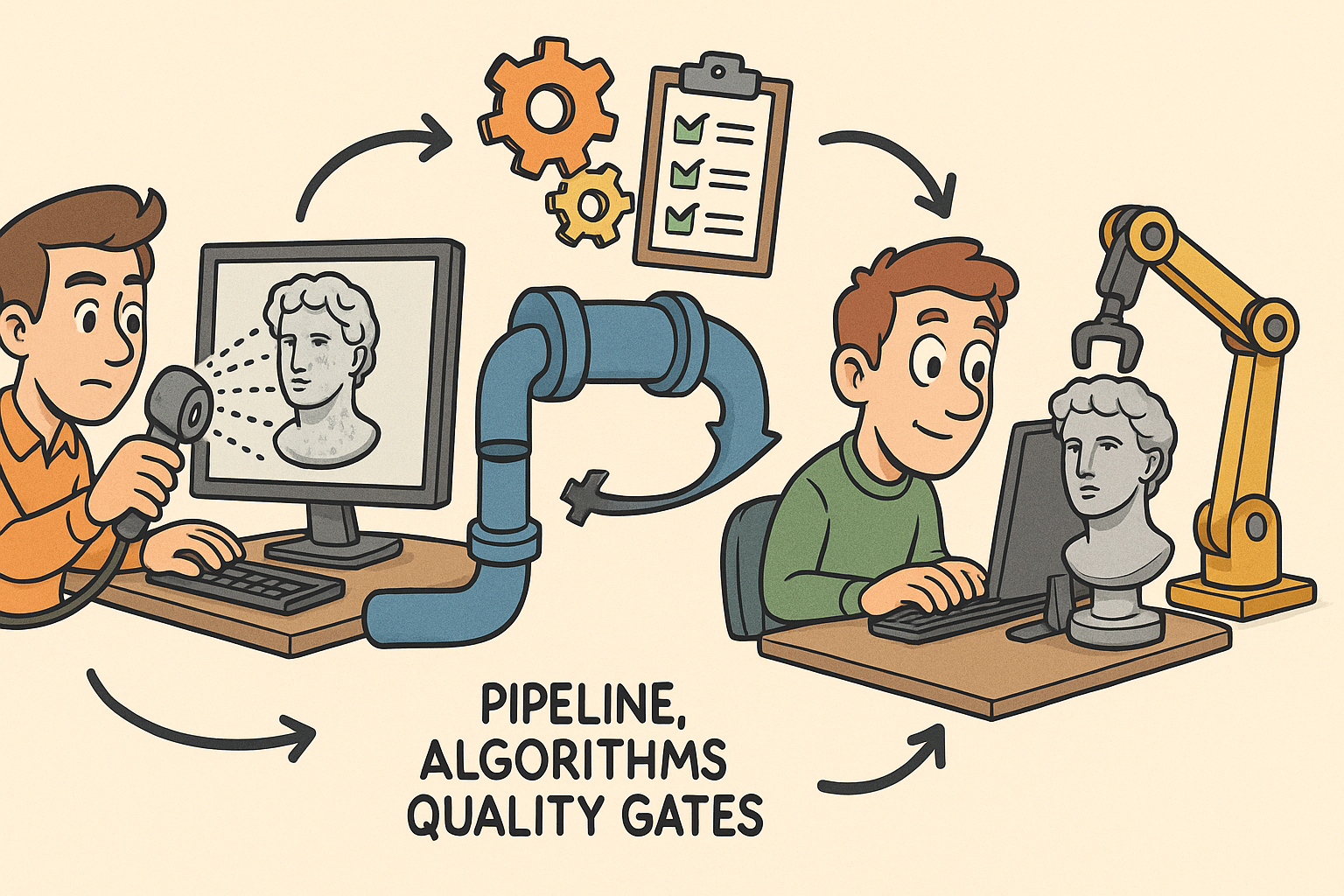Your Cart is Empty
Customer Testimonials
-
"Great customer service. The folks at Novedge were super helpful in navigating a somewhat complicated order including software upgrades and serial numbers in various stages of inactivity. They were friendly and helpful throughout the process.."
Ruben Ruckmark
"Quick & very helpful. We have been using Novedge for years and are very happy with their quick service when we need to make a purchase and excellent support resolving any issues."
Will Woodson
"Scott is the best. He reminds me about subscriptions dates, guides me in the correct direction for updates. He always responds promptly to me. He is literally the reason I continue to work with Novedge and will do so in the future."
Edward Mchugh
"Calvin Lok is “the man”. After my purchase of Sketchup 2021, he called me and provided step-by-step instructions to ease me through difficulties I was having with the setup of my new software."
Mike Borzage
Integrating Ethical AI in Design Software: Ensuring Transparency, Fairness, and User Privacy
November 25, 2024 5 min read


Introduction to Ethical AI in Design Software
In the modern landscape of design software, the integration of Artificial Intelligence (AI) has transformed the way designers conceptualize and execute their ideas. As AI becomes increasingly embedded within design workflows, the importance of ethical AI considerations cannot be overstated. Ethical AI in the context of design software refers to the development and deployment of AI tools that adhere to moral principles, ensuring fairness, transparency, and respect for user autonomy. Designers frequently face potential ethical dilemmas when utilizing AI tools, such as unintended biases in algorithms or the opaque nature of AI decision-making processes. Addressing these concerns is crucial for fostering trust and maintaining the integrity of the design industry. By integrating ethical considerations into AI development, we can harness the full potential of AI while mitigating risks and promoting responsible innovation.
Transparency
Transparency is a fundamental ethical consideration in the development and use of AI within design software. It involves the openness and clarity about how AI algorithms function and make decisions. Understanding the inner workings of AI tools is essential for designers to trust and effectively utilize them. The importance of transparency lies in its ability to demystify AI processes, allowing users to comprehend the rationale behind AI-generated suggestions or designs. This understanding not only enhances user confidence but also enables designers to make informed decisions and retain creative control. The need for clear documentation of AI decision-making processes cannot be overstated. Detailed documentation provides insight into the data sources, algorithmic logic, and potential limitations of AI tools. This level of transparency empowers designers to critically assess AI outputs, ensuring that the technology serves as a collaborative partner rather than an enigmatic authority.
Bias and Fairness
The examination of algorithmic bias is another critical ethical consideration in design software. AI systems are only as unbiased as the data and algorithms upon which they are built. There is a significant risk that biases in data or design processes can lead to unfair or discriminatory outcomes. This is particularly concerning in design contexts where inclusivity and representation are paramount. Strategies for ensuring fairness and inclusivity in AI-generated designs involve proactive measures:
- Data Diversity: Utilizing diverse and representative datasets to train AI models reduces the risk of perpetuating existing biases.
- Algorithmic Auditing: Regularly reviewing and testing algorithms for biased outputs helps identify and rectify issues promptly.
- User Feedback Integration: Incorporating feedback mechanisms allows users to report concerns about bias, fostering continuous improvement.
User Consent and Privacy
User consent and privacy are paramount when integrating AI into design software. AI systems often rely on extensive data collection to function effectively, which raises concerns about how user data is gathered, stored, and utilized. The role of user consent in data collection and AI training is foundational to ethical practices. Users should be fully informed about what data is being collected and have the option to opt-in or opt-out. Ensuring privacy and security of user data involves implementing robust measures:
- Encryption and Security Protocols: Protecting data through advanced security technologies prevents unauthorized access.
- Transparency Policies: Clearly communicating data practices builds trust and informs users of their rights.
- Data Minimization: Collecting only the data necessary for AI functionality reduces exposure and potential misuse.
Establishing Guidelines and Frameworks
Implementing ethical AI practices requires the establishment of clear guidelines and frameworks. These serve as a roadmap for developers and organizations to integrate ethical considerations systematically. The development of best practices for ethical AI integration in design software involves several key steps. First, defining ethical principles that align with the organization's values and societal expectations is crucial. This includes commitments to transparency, fairness, and respect for user autonomy. The role of interdisciplinary teams in addressing ethical challenges cannot be underestimated. By bringing together experts from various fields—such as ethics, law, design, and technology—organizations can gain comprehensive insights into potential ethical pitfalls and collaboratively develop solutions. Moreover, these teams can help in crafting policies that are both practically effective and ethically sound, ensuring that the AI integration enhances rather than undermines the design process.
Educating Designers and Developers
Educating designers and developers about ethical AI considerations is essential for fostering a culture of responsibility. The importance of training programs focused on ethical AI lies in their ability to equip professionals with the knowledge and skills needed to navigate complex ethical landscapes. These programs should cover topics such as recognizing and mitigating bias, understanding privacy laws, and implementing transparent AI practices. Encouraging a culture of responsibility amongst designers and engineers involves more than just training; it requires creating an environment where ethical considerations are embedded in everyday practices. This can be achieved by:
- Leadership Commitment: Organizational leaders must prioritize ethics, setting the tone for the entire team.
- Ongoing Education: Providing continuous learning opportunities keeps ethics at the forefront as technologies evolve.
- Ethical Performance Metrics: Incorporating ethical considerations into performance evaluations emphasizes their importance.
Continuous Monitoring and Evaluation
Continuous monitoring and evaluation are critical components of implementing ethical AI practices. Techniques for ongoing assessment of AI tools include regular audits, user testing, and performance analysis focused on ethical indicators. These evaluations help in identifying unforeseen ethical issues that may arise after deployment. Feedback loops for users to report ethical concerns are an invaluable part of this process. By providing accessible channels for users to express their concerns or experiences, organizations can respond proactively. This user engagement not only aids in identifying issues but also enhances trust and transparency. Additionally, leveraging analytics and AI explainability tools can provide deeper insights into AI behavior, ensuring that ethical compliance is maintained. Continuous monitoring is not a one-time effort but an ongoing commitment to uphold ethical standards as technologies and user interactions evolve.
Conclusion
The integration of ethical AI considerations into design software is not just a technical necessity but a moral imperative. By focusing on transparency, fairness, user consent, and privacy, the design industry can leverage AI's capabilities while minimizing risks. Ethical AI practices have the potential to foster trust among users, enhance creativity, and drive innovation in a responsible manner. Designers and software developers are called to prioritize these ethical considerations, recognizing their role in shaping a more equitable and sustainable future for the industry. Through collective effort and commitment to ethical practices, the design community can ensure that AI serves as a force for good, enhancing the creative process while upholding the highest standards of integrity.
Also in Design News

From Raw Scans to Manufacture-Ready Geometry: Pipeline, Algorithms, and Quality Gates
December 08, 2025 13 min read
Read More
Design Software History: Numerical Robustness in Geometry Kernels: History, Failure Modes, and Engineering Playbook
December 08, 2025 13 min read
Read More
Cinema 4D Tip: Reusable Cinema 4D Camera Rig Presets for Faster Shot Setup
December 08, 2025 2 min read
Read MoreSubscribe
Sign up to get the latest on sales, new releases and more …


